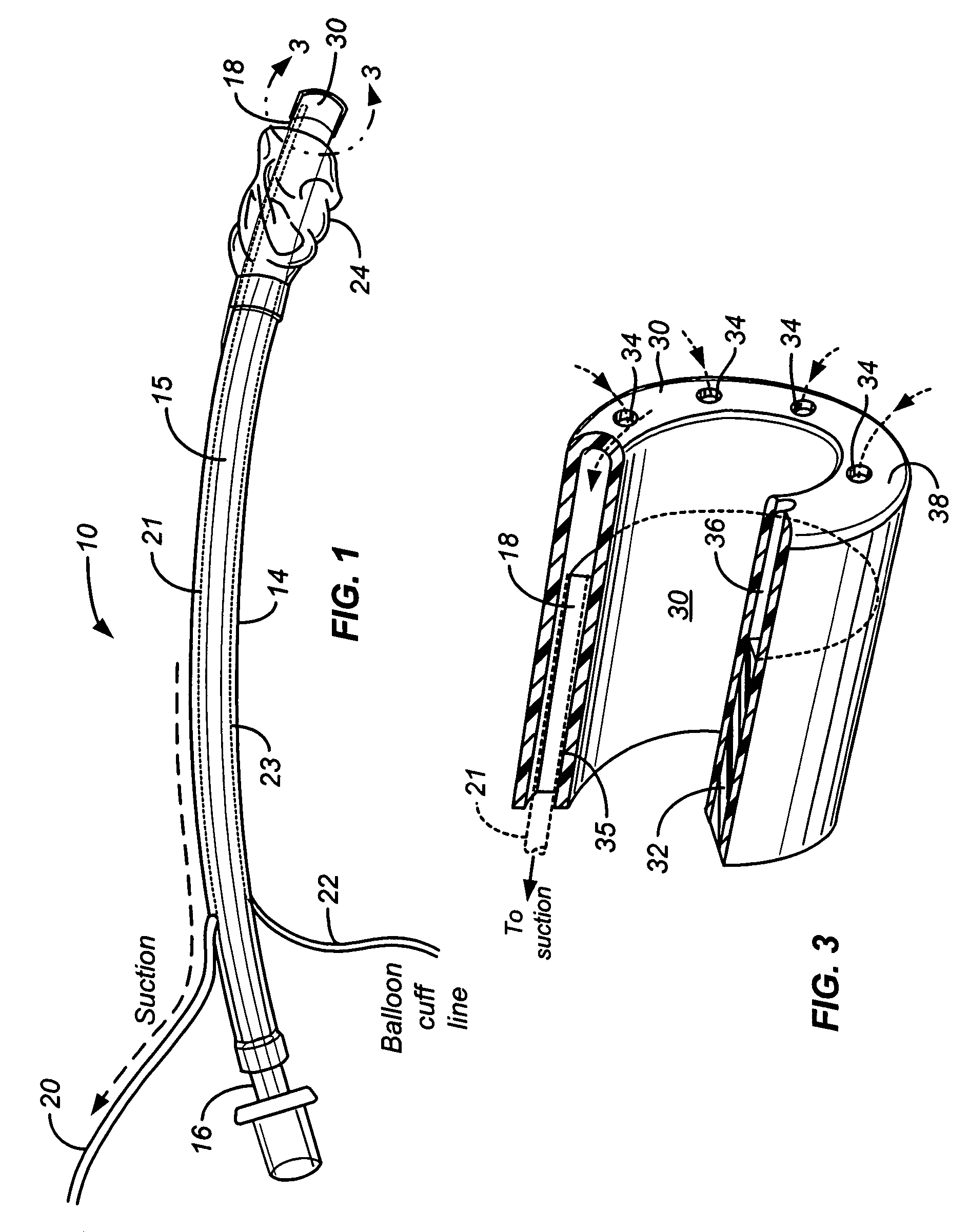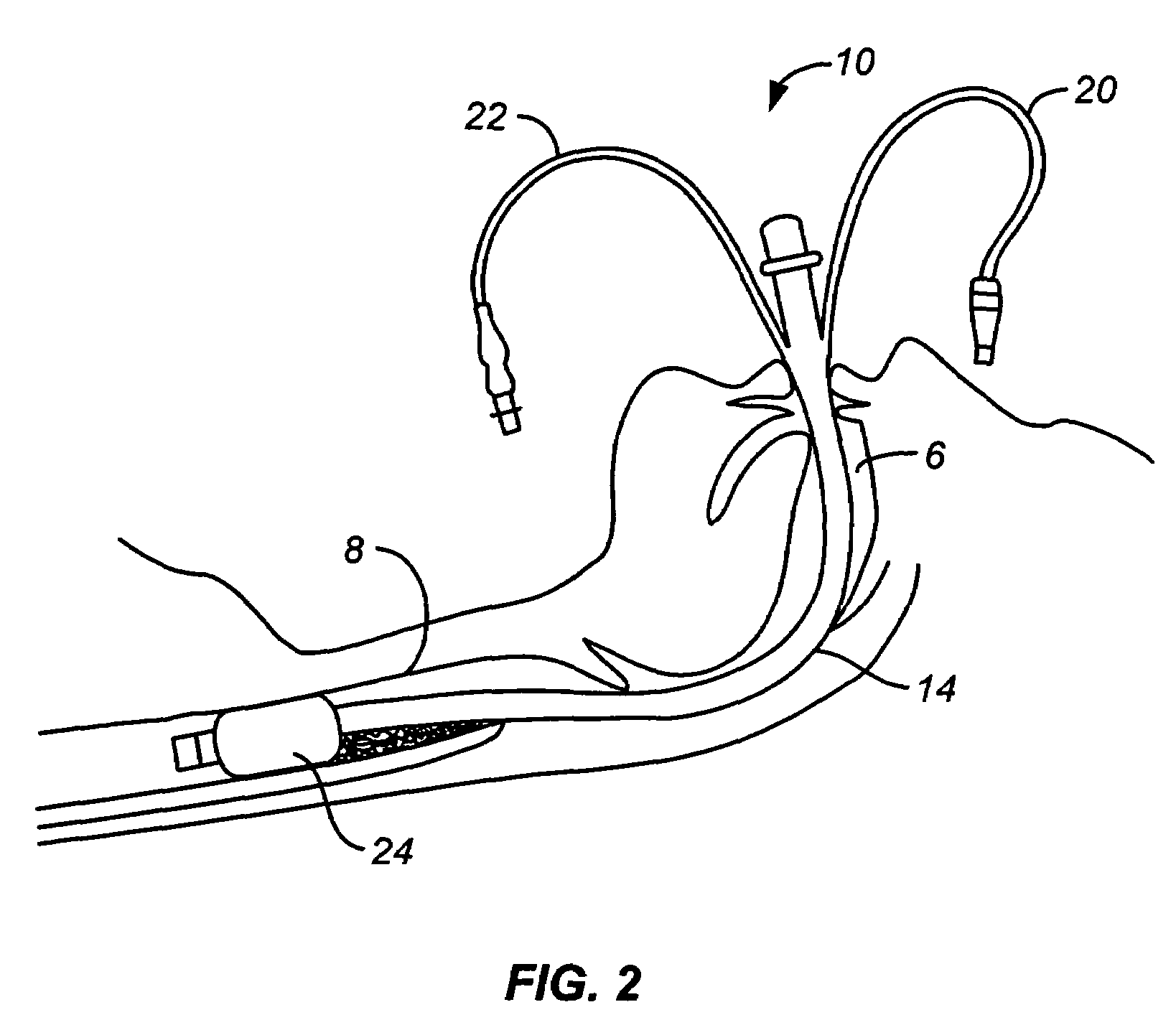Mucus slurping endotracheal tube
a technology of endotracheal tubes and mucus, which is applied in the field of cleaning medical devices, can solve the problems of accumulation of mucus on the inside walls of endotracheal tubes, inability to carry mucus, and inability to maintain a sufficient flow of oxygen to the body, and achieves the effect of greater assurance of cleanliness
- Summary
- Abstract
- Description
- Claims
- Application Information
AI Technical Summary
Benefits of technology
Problems solved by technology
Method used
Image
Examples
example i
[0031]The mucus slurping endotracheal tube of the present invention was tested with healthy, anesthetized and paralyzed sheep. A Mallinckrodt CASS tube was modified and fitted with a mucus slurping cap in the manner illustrated in FIG. 1 and then inserted into the trachea of the anesthetized sheep. The anesthetized sheep were mechanically ventilated for 72 hours with mucus periodically being suctioned through the mucus slurping cap. No other device was used to assist in the cleaning of mucus from the inside walls of the endotracheal tube. At the end of the 72 hour study, the sheep were euthanized and autopsied.
[0032]After removal and inspection of the modified endotracheal tube, no trace of mucus was found throughout the length of the endotracheal tube. No gross abnormalities of the tracheal mucosa were seen in the autopsied sheep. Bacterial cultures of the 5 lobes of the autopsied sheep lungs were negative. Arterial blood gases were within normal range.
PUM
 Login to View More
Login to View More Abstract
Description
Claims
Application Information
 Login to View More
Login to View More - R&D
- Intellectual Property
- Life Sciences
- Materials
- Tech Scout
- Unparalleled Data Quality
- Higher Quality Content
- 60% Fewer Hallucinations
Browse by: Latest US Patents, China's latest patents, Technical Efficacy Thesaurus, Application Domain, Technology Topic, Popular Technical Reports.
© 2025 PatSnap. All rights reserved.Legal|Privacy policy|Modern Slavery Act Transparency Statement|Sitemap|About US| Contact US: help@patsnap.com



